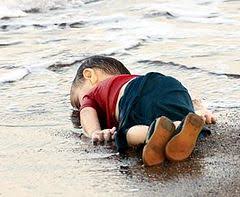The concern of whether to publish something or not is a question journalists struggle with everyday when deciding how exactly a story needs to be told. In this range of debate lies the graphic picture of a child, and what it signifies for the audience as well as the subject in the frame.
Roger Tooth from The Guardian wrote, “We wanted to show the readers the reality of life – and death, but we didn’t want to shock or unnecessarily upset them. We tread a fine line and, because each picture is judged on its merits on the day, it is very difficult to have hard and fast rules.”
He said this in wake of the backlash surrounded the publishing of photos of children killed in Gaza, along with the Palestinian progaganda war believed to have been started because of it. But that is not to say the debate has not found its way overseas.
Fortunately, the United States was founded on the First Amendment, one of the very reasons other countries look up to us, especially when it comes to racy subject matter.
Our First Amendment sets us apart from other countries in the world so if we were to just throw it out, it would be a devastating blow for what the most important law in our land stands for.
That said, children are the highest form of innocence and that is why people protect them so fiercely. So when they are depicted in the news through the means of graphic pictures, people think twice about it. While the images of injured or even worse, deceased children are extremely hard to see, it is indeed part of our First Amendment right.
We as Americans have the right to publish and see such images without interference. If they begin to censor images of hurt children, one can only wonder where the line will one day be drawn; that is, if any deserves to be drawn at all.
Once the right is infringed upon, to see every truth the world has to offer, no matter how vile or disturbing, it opens the floodgates to want to change other amendments this country holds dear.
It is completely fine when children are happy and doing cute things in the media, but the second they are seen as truly human and sometimes graphicly, everyone looks away and shuns the media for it.
Not all cases need a photo to accompany them, especially if it does not help get the point across. Many times when people read graphic stories deprived of a visual aid, they do not truly picture the horrific circumstances that are happening.
Graphic pictures can get across a crucial point that words simply cannot. When a world is in crisis, via tragic events or otherwise, pictures help us put into words what words themselves do not have the ability to.
Graphic pictures of children are no different. Children do have rights and should be protected to the furthest extent of the law, but like the rest of the people in this world, they are a part of a larger cause. Graphic pictures of children are a way to learn from others’ mistakes.
As hard as they might be to look at, they have always been an important part in shaping American society. Sometimes the hard way is the only way to learn when it comes to a dire situation, in which case a photo is a reporter’s greatest asset.
We live in a country where we are not faced with many of the same horrific deaths and gruesome scenes seen everywhere else, so we live in a unique bubble where everything is usually alright.
NPR published an article called “What Was The Impact Of The Iconic Photo Of The Syrian Boy?” The photo they are talking about is the 3-year-old boy who drowned to death and washed up on a beach in Turkey after trying to flee the Syrian refugee crisis.
The article states, “Immediate outpourings can be short-lived. The number of average daily amount of donations to the Swedish Red Cross campaign for Syrian refugees, for instance, was 55 times greater in the week after the photo (around $214,300) than the week before ($3,850). By the second week, the donation totals had already begun to decline, but still topped $45,400.”
This just shows how impactful pictures of children in crisis have on people’s emotions and thoughts. As the saying goes: a picture is worth a thousand words.





![[Both photos courtesy of sonoma.edu]
Ming-Ting Mike Lee stepped in as the new SSU president following Sakakis resignation in July 2022](https://sonomastatestar.com/wp-content/uploads/2024/04/CC4520AB-22A7-41B2-9F6F-2A2D5F76A28C-1200x1200.jpeg)


























